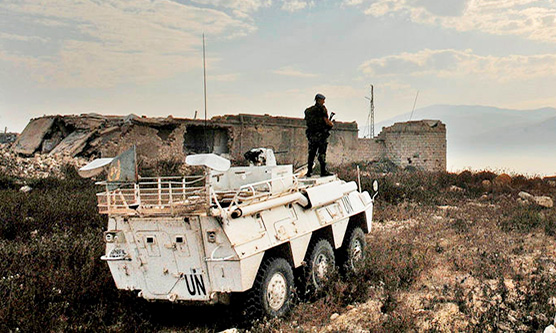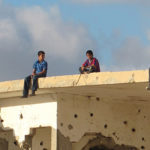When designing CBMs, lessons include: Link CBMs to wider peace- and state-building processes or negotiations; locally design CBMs according to local context; use CBMs in situations where trust is low; start CBMs in non-controversial, or symbolic, issue areas; design CBMs with long-term, incremental approaches; combine several CBMs at different track levels, and in different ...» more
Conflict analysis
Dealing with election-related violence in fragile and conflict-affected states
There are a number of causes of election-related violence, which can occur at different stages of the electoral cycle. Dealing with this violence very much depends on understanding these causes and tailoring measures to address them. This report draws on guidance material, evaluation literature and empirical studies to provide a brief overview of measures to prevent and address ...» more
The role of security organisations in security sector reform
There is consensus that donor approaches to SSR have failed to achieve the ambitious goals and objectives espoused in policy documents. Debates in recent literature centre on the reasons for this ‘policy-practice gap’ (Sedra, 2010; Bakrania, 2014b). Key themes include: There is agreement in the literature that donor assistance has generally taken an apolitical and technical ...» more
Conflict
Conflict is inherent in all societies and arises when two or more groups believe their interests are incompatible. ‘Conflict’ is not, however, interchangeable with ‘violence’. Non-violent resolution is possible when individuals and groups have trust in their governing structures, society and institutions to manage incompatible interests. Conflict becomes a problem when this ...» more
Methods for monitoring and mapping online hate speech
Approaches to mapping hate speech online can be classified into three principal groups based on their purpose: Real-time monitoring and mapping: These projects, the best known of which is the Umati project in Kenya, aim to provide continuous monitoring of online media. Such projects are rare, but they have the potential to serve as early warning systems or enable a reaction ...» more
The impact of conflict on poverty
There is consensus in the literature that conflict impacts on poverty, but evidence on how this impact occurs is often limited, unsystematic, and sometimes contradictory. Much of the literature also discusses how poverty can contribute to conflict and the possibility of cycles of poverty and conflict as a result. Overall the latest evidence suggests that violent conflict ...» more
Urbanisation and conflict in Pakistan
There is a broad body of literature on violence in Pakistan, however less specific material drawing links between urbanisation and incidences of violence. Some of the main links between urbanisation and violence identified in the available literature include: Competition for resources, particularly land, water and housing. Weak infrastructure. Demographic change, ethnic ...» more
Costs of peace processes
The rapid review indicated that there is limited literature available on this topic. The information uncovered by this rapid review focuses mainly on the latter stages of a peace process and the core components of supporting the success of the peace process. These include, for example, disarmament, demobilisation and reintegration (DDR) processes, dialogue forums, transitional ...» more
Conflict analysis of Liberia
It is over ten years since Liberia’s final peace agreement was signed in 2003, putting an end to 14 years of violent civil wars. This paper finds that current levels of overt conflict in Liberia are relatively low, and there has been no large-scale violence since the end of the second war. However, it also finds that many of the root causes and grievances that led to the wars ...» more
Sending messages to reduce violent conflict
Key findings Research for this helpdesk report did not find a specific body of literature focused on sending messages to change attitudes, norms and behaviour about violent conflict. Rather, there is a wide range of literature that covers interventions to address conflict, which include the sending of messages in one form or another, and often as part of a wider strategy. This ...» more
Conflict analysis of Algeria
Local and regional protests about a diverse range of socio-economic issues have been taking place in Algeria since 2011. However, much of the literature suggests that Algeria was not greatly affected by the protests emerging from the 'Arab Spring'. The Algerian government has succeeded in preventing protests from escalating to the levels witnessed in neighbouring countries ...» more
Conflict analysis of Mauritania
Mauritania is a large, mostly desert territory, populated by 3.2 million inhabitants and with a history of military rule and regime change through coup d’états. It has a history of inter-ethnic conflict and politicisation of identity with a notable border dispute in 1989 between Mauritania and Senegal resulting in violence and the deportation of non-Arabic speaking (i.e. black) ...» more
Conflict analysis of Morocco
Since the onset of the Arab Spring, Morocco has experienced protests about a diverse range of economic, political, and social issues. King Mohammed VI responded rapidly to the early protests, implementing a new constitution in 2011. However much of the literature suggests that, to date, these reforms have had a limited impact. Moreover, there have been rising levels of unrest ...» more
Conflict analysis of Tunisia
The revolution in Tunisia in 2011 – the first political upheaval of what became the ‘Arab Spring’ – marked the end of over five decades of authoritarian rule, first by post-colonial leader Habib Bourguiba and then by Zine al-Abidine Ben Ali. The country’s first democratic elections, held in March 2011, produced a coalition government comprising of the dominant Tunisian Islamic ...» more
State fragility and social cohesion
This report reviews the relationship between social cohesion and state fragility – focusing on literature from 2010 onwards. There is no clear empirical understanding in the literature of how social cohesion contributes to state resilience or fragility, as it is very difficult to measure, and to assess independently other variables that impact on state fragility. Key points ...» more
Post-2015 governance and peace indicators
The post-2015 High Level Panel (HLP) produced a report in May 2013 which outlined their recommendations for moving the development agenda beyond the Millennium Development Goals. The report contained 11 illustrative goals which the UN might consider for adoption. This report considers potential indicators for the new Goals 10 and 11, which are: 10. Ensure Good Governance and ...» more
Islamic radicalisation in North and West Africa: drivers and approaches to tackle radicalisation
This paper synthesises literature on Islamic radicalisation in North and West Africa, with a particular focus on the drivers of radicalisation and evidence on approaches that have attempted to tackle radicalisation. There is significant debate in the academic literature concerning the definition of ‘radicalisation’. For the purposes of this report, the definition of Islamic ...» more
Responding to the Syrian refugee crisis in Lebanon – lessons learned
Three groups of lessons emerge from the literature: Political lessons include: understanding Lebanon’s historic refugee experience; understanding how sectarian divisions affect policy and decision-making; the limitations of excluding key stakeholders; and understanding historic relations between refugees and host communities. Strategic lessons include developing a medium-term ...» more
Recent literature on instability and intrastate conflict in Zimbabwe
There is consensus in the recent (2011-13) literature on Zimbabwe that although the country has stabilised considerably since the last elections in 2008, the risk of internal conflict during the period surrounding the 2013 elections is high. The principal factors underpinning the potential for conflict are: The bitter divisions among the main political parties, the apparent ...» more
International aid to Lebanon
Key findings: Solid data from the OECD and OCHA makes mapping the official aid to Lebanon possible. However, official data is only part of the story: major aid flows have remained unrecorded, for example from Saudi Arabia and Iran. Information on macro-level aid also seems largely gender-blind. Lebanon has received large volumes of international donor aid since the 1970s. ...» more


